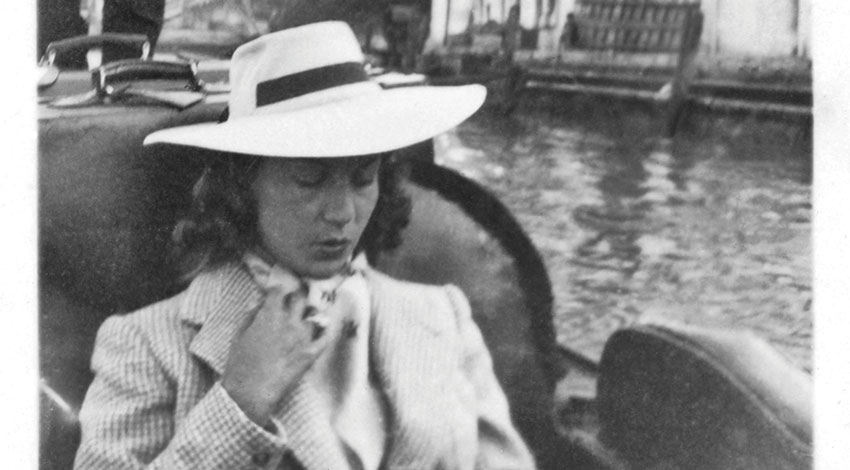Life for Women in Italy: From World War I to Today
Throughout history, Italian women have held many roles. Road Scholar expert Mara Mori shares a brief history of what life was like for Italian women during the last hundred years to give you a new perspective on our 2023 Campus of the Year.
The period between World War I and the end of World War II marked a significant transformation in the status and conditions of Italian women. This was a time of political, social and cultural change, and the experiences of Italian women were significantly shaped by the events of this period.

During World Wars I and II, many Italian men were drafted into the military, leaving women to take on new roles and responsibilities in the workforce. Women were called upon to work in various sectors, including agriculture and manufacturing, to support the war effort. In the agricultural sector, women were responsible for planting and harvesting crops, tending to livestock and performing other tasks necessary to maintain farms. In the manufacturing sector, women worked in factories and other industrial settings, producing goods and materials that were essential to the war effort. They worked long hours in hazardous conditions, often performing physically demanding tasks such as operating machinery and handling heavy materials. Despite the challenges they faced, many Italian women rose to the occasion during the war years, demonstrating their strength and resilience in the face of adversity. Their contributions to the war effort helped to support their families and communities, thus paving the way for greater gender equality in the workforce in the years that followed.
However, Italian society remained largely patriarchal, with traditional gender roles and expectations continuing to prevail. Women were expected to be primarily responsible for household chores and child-rearing, and they often faced discrimination in both the workplace and in education.
The rise of fascism in Italy during the 1920’s and 1930’s also had a significant impact on women's rights and freedoms. The fascist regime promoted a vision of women as wives and mothers, emphasizing their role in maintaining the traditional family unit and encouraging them to have large families to support the nation's growth. Women were discouraged from pursuing careers outside the home and were subjected to strict moral and behavioral codes.

In Italy, women played a crucial role in the resistance movement, against Mussolini's fascist regime first, and then against Nazi occupation. Many women were involved in clandestine activities such as distributing anti-fascist literature, gathering intelligence and providing safe houses for resistance fighters. Some women even took up arms and fought alongside men in partisan groups, including the famous "Brigate Garibaldi" that fought against the Nazi occupation of Italy.
The Italian Constitution of 1946 was a significant milestone for women's rights in Italy. The Constitution, which was adopted after World War II and the fall of fascism, was influenced by the democratic and progressive ideals of the time, providing a framework for equal rights and opportunities for all Italian citizens, including women.
The post-war economic boom created a demand for labor, and women were able to find new jobs in a variety of industries. However, despite these new opportunities, women still faced significant challenges in the workplace, including wage discrimination, unequal treatment and limited opportunities for advancement.
Despite the challenges that they faced, Italian women continued to push for greater rights and equality during this period. There were also new women's organizations that formed to address issues such as birth control and women's health. These organizations played an important role in advocating for change, and they helped to lay the groundwork for the feminist movements of the 1960’s and 1970’s.

Italian women today are highly educated and active in the workforce, with a significant number of women holding advanced degrees and pursuing professional careers. In fact, the gender gap in education has almost disappeared, with women now accounting for the majority of university graduates in Italy. However, women still face challenges in the workplace, with a gender pay gap that is higher than the European Union average.
Italian women are also active in politics and have made significant strides in recent years. In 2022, Italy's first female prime minister, Giorgia Meloni, was appointed, and there are increasing numbers of women in political leadership positions. Nevertheless, there is still much work to be done to achieve gender equality in all areas of society.
Learn more about Italy firsthand on our learning adventures in our 2023 Campus of the Year!
__________________________________________________________________
Mara Mori was born and raised in the Reggio Emilia region of Italy. Mara earned a doctorate in modern history from the University of Bologna and wrote her thesis on ancient maps and drawings of the Po River. She has published numerous essays and articles on gastronomy, wine, winemaking and travel. Meet Mara on La Dolce Vita: The Italian Lakes of Como, Garda and Maggiore.
